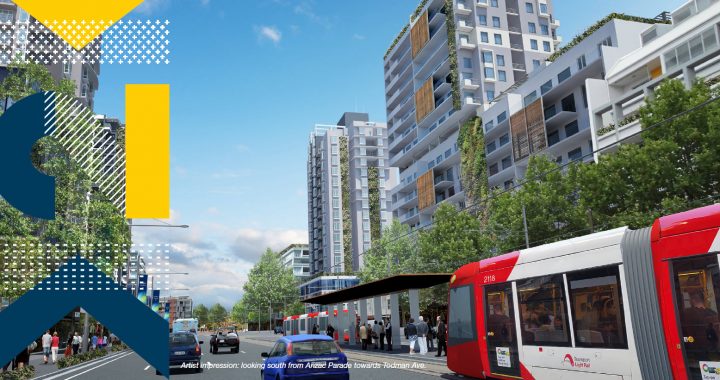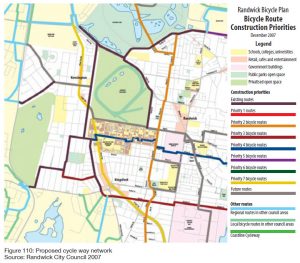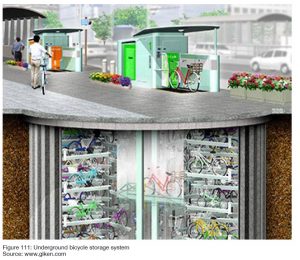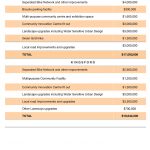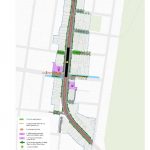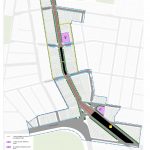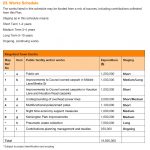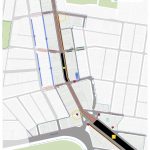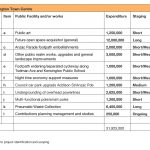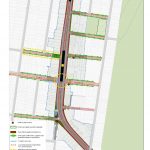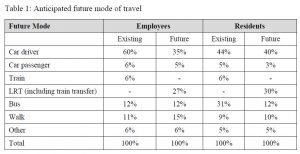Introduction
Randwick City Council is currently conducting community consultation in relation to a planning proposal and contributions plan that affects properties located within and immediately adjoining the Kensington and Kingsford (K2K) town centres.
Please have your say before 1 Oct 2019.
The Planning Proposal is mostly focussed on Strategic Planning (eg. zoning, heritage, building heights and housing density), however includes a few active travel items.
The full suite of documents are available on the website. We have summarised some of the cycling-related items below.
1. Planning Strategy
Appendix 1a: Planning Strategy – Part 1 of 2 (9.32 MB) (pdf)
10 ‘big ideas’
Earlier work resulted in the identification of ten ‘big ideas’. These ideas are considered suitable to the context of the town centres, with a focus on sustainability and improving the environmental amenity of the public domain. (Page 9)
- Widen Anzac Parade to form a Boulevard: ‘Anzac Parade For The People’
- Integrate sustainability infrastructure into the precinct
- Establish a “green grid” of walkable streets that link plazas and parks
- Community spaces and a range of public benefits
- Concentrate activity and built form at nodes
- Nine-ways transformed into Kingsford Junction, as a new civic transport and urban hub
- Prioritise walking, cycling and public transport
- Increased provision of affordable housing
- Leverage the university and health campus to foster innovation uses
- Create new and reinvigorated plazas for people to gather.
Vision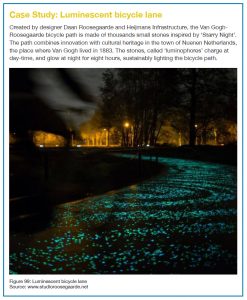
Kensington (excerpt, Page 22)
“Kensington will evolve into a vibrant and dynamic town centre situated along Anzac Parade, Sydney’s finest grand green boulevard.
The town centre will be well connected and highly accessible, capitalising on its proximity to key employment hubs including the Randwick Health and Education Super Precinct and the Sydney CBD.”
“The town centre will have a green identity, setting the bench mark for sustainability within the Local Government Area (LGA) through Ecologically Sustainable Development (ESD) targets, Water Sensitive Urban Design (WSUD) practices, high quality green public places with linkages to nearby
parks, and sustainable transport modes such as the light rail, cycling and walking.”
Kingsford (excerpt, Page 22)
“Kingsford will develop into an exciting and dynamic town centre continuing to draw on its rich multicultural identity. The town centre will provide a diverse offer of restaurants, cafes and retail shopping, set within a rejuvenated public domain that supports activation and social interaction.”
“The town centre will have a green focus and set a new performance benchmark for sustainability within the LGA through ESD targets, WSUD practices, public places with canopy trees and landscaping and support of sustainable transport modes such as the light rail, cycling and walking.”
Strategies
Environmental
Part C 7.0 (page 77) outlines the environmental sustainability including strategies and actions to reduce traffic congestion and improve walking and cycling access.
“This draft Strategy also commits to the principles of travel demand management, reducing reliance on private vehicles and providing for enhanced public transport, pedestrian and cycle networks to facilitate user-friendly access to the town centres and surrounding destinations.”
Objectives (excerpt)
- To establish Kensington and Kingsford as a best-practice environmentally sustainable district that provides for the physical, mental and social wellbeing of its residents and visitors
- To provide a safe, integrated and accessible network of pedestrian and cycling access
- To enhance amenity by reducing pollution and congestion arising from private vehicle use and encourage active transport and public transport
Transport
Part C 7.5 (Page 94) acknowledges the many opportunities to reduce congestion and carbon emissions by promoting active transport, especially due to the lower levels of car ownership in the area (compared to across Sydney).
“Both Kensington and Kingsford have a decreasing proportion of residents driving to work, which is particularly noteworthy given the greater Sydney trend of an increasing proportion of people driving to work (Figure 103). The trend in Kensington and Kingsford is accompanied by an increasing percentage of residents using buses, walking or cycling to work which
has increased for both these town centres between 2006 and 2011 by 2.9% and 4.8% respectively. This correlates with the low vehicle ownership rates in Kensington and Kingsford.”
Part C 7.9 (page 103) acknowledges that the design of a place can influence a
person’s motivation and opportunity to use active transport such as walking or cycling, and the follow-on affect of the health benefits.
Cycle Way Works
As determined by Randwick City Council’s Works Committee in February 2015, the priority bicycle infrastructure for the LGA are cycle paths connecting to the light rail stops.
As shown in Figure 110, the following cycleway works are proposed for the Kensington and Kingsford areas over the next twelve months:
• Todman Ave and Lenthall Street
• Doncaster Ave, Day Ave and Houston Road
• Sturt Street.
Kingsford Light Rail terminus contains capacity for 30 bicycles to be parked. Demand will be assessed and if additional bicycle storage is require, underground systems will be investigated.
Active Transport is continued in Appendix 1b: Planning Strategy – Part 2 of 2
Bike Share Scheme
“City of Sydney, Inner West Council and Randwick City Council are currently working on a feasibility study for a bike share scheme in Sydney. This feasibility study is expected to be completed by the end of 2016.”?
“Funding will be allocated for bike share hubs within the Kensington and Kingsford town centres, to provide for the potential bike share scheme.”
Encouraging Reduced Private Car Ownership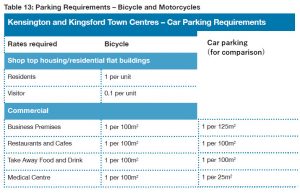
“The NSW Apartment Design Guide outlines that reduced parking requirements promote a reduction in car dependency and encourage walking, cycling and use of public transport.”
“Provision of parking for alternative forms of transport such as car share vehicles, motorcycles and bicycles should also be provided for, as part of a strategy to reduce reliance of private car ownership.”
Safety of Streets & Public Space
The perception of safety is critical to the success of a town centre. Strategies that aim to improve the perception of safety as well as the improve amenity of the public domain include:
- Designing streets and public spaces to increase natural surveillance and foster a sense of safety.
- Active frontages and clear glazing to encourage passive surveillance
- Public lighting upgrades
- Wayfinding signage
Implementation Plan
Page 159
2. Schedule of Community Infrastructure
Appendix 3b: Kensington and Kingsford Town Centres – Community Infrastructure Contribution – Development Guidelines outlines how Community Infrastructure is to be delivered as part of the renewal of the Kensington and Kingsford town centres.
The community infrastructure contributions scheme is one of three development contributions schemes proposed by the K2K town centres planning strategic to deliver a range of community benefits, local infrastructure and affordable rental housing. (See also K2K s7.12 Development Contributions Plan and Affordable Housing Plan for the full package).
Cycling items outlined –
Kensington
$4,000,000 – separated bike network and other improvements (Todman Ave)
$300,000 – bicycle parking facility (Todman Ave, west of Anzac Parade)
Kingsford
$2,900,000 – separated bike network and other improvements (Meeks St and Barker St)
- Schedule (costs)
- Kensington
- Kingsford
3. Development Contributions Plan
Development Contributions Plan: Kensington and Kingsford Town Centres outlines the conditions for certain development consents for contribution towards community and local infrastructure. This levy will assist Council in providing high quality and diverse public facilities to realise the outcomes of the K2K Town Centre Planning Strategy.
Cycling items outlined –
Kingsford
No specific cycling items
Kensington
$1,000,000 – footpath widening / separated cycleway along Todman Ave and Kensington Public School (Short/Medium term)
- Kingsford schedule (cost & timing)
- Kingsford map
- Kensington schedule (cost & timing)
- Kensington map
4. Transport Assessment
See also Appendix 10a: Kensington and Kingsford Transport Assessment Stage 1 (1.52 MB) (pdf)
Cycling doesn’t appear to be featured as a mode of travel or mentioned in any detail.
